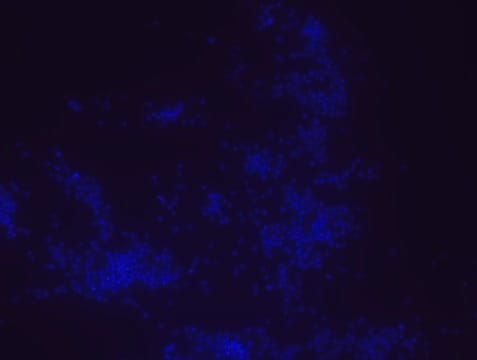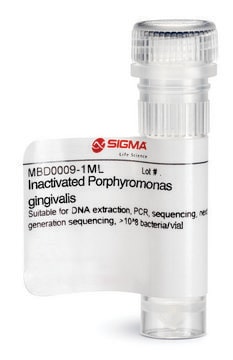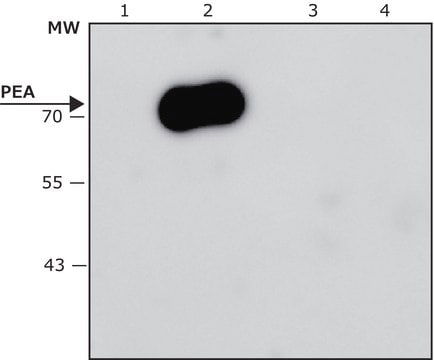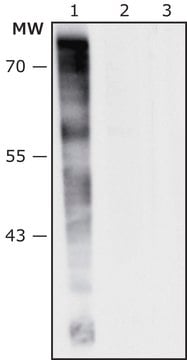SAB4200832
Anti-Porphyromonas gingivalis antibody produced in rabbit
IgG fraction of antiserum
About This Item
Polecane produkty
pochodzenie biologiczne
rabbit
forma przeciwciała
IgG fraction of antiserum
opis
Research area: Microbiome
Postać
buffered aqueous solution
reaktywność gatunkowa
Porphyromonas gingivalis (Lipopolysaccharides (LPS) from whole extract)
opakowanie
antibody small pack of 25 μL
stężenie
~1 mg/mL
metody
immunoblotting: 1:50,000-1:100,000 using dead Porphyromonas gingivalis bacteria
indirect ELISA: 1:20,000-1:40,000 using Porphyromonas gingivalis LPS for coating.
Warunki transportu
dry ice
temp. przechowywania
−20°C
docelowa modyfikacja potranslacyjna
unmodified
Powiązane kategorie
Opis ogólny
Zastosowanie
Postać fizyczna
Inne uwagi
Oświadczenie o zrzeczeniu się odpowiedzialności
Kod klasy składowania
10 - Combustible liquids
Klasa zagrożenia wodnego (WGK)
WGK 1
Temperatura zapłonu (°F)
Not applicable
Temperatura zapłonu (°C)
Not applicable
Certyfikaty analizy (CoA)
Poszukaj Certyfikaty analizy (CoA), wpisując numer partii/serii produktów. Numery serii i partii można znaleźć na etykiecie produktu po słowach „seria” lub „partia”.
Masz już ten produkt?
Dokumenty związane z niedawno zakupionymi produktami zostały zamieszczone w Bibliotece dokumentów.
Nasz zespół naukowców ma doświadczenie we wszystkich obszarach badań, w tym w naukach przyrodniczych, materiałoznawstwie, syntezie chemicznej, chromatografii, analityce i wielu innych dziedzinach.
Skontaktuj się z zespołem ds. pomocy technicznej








